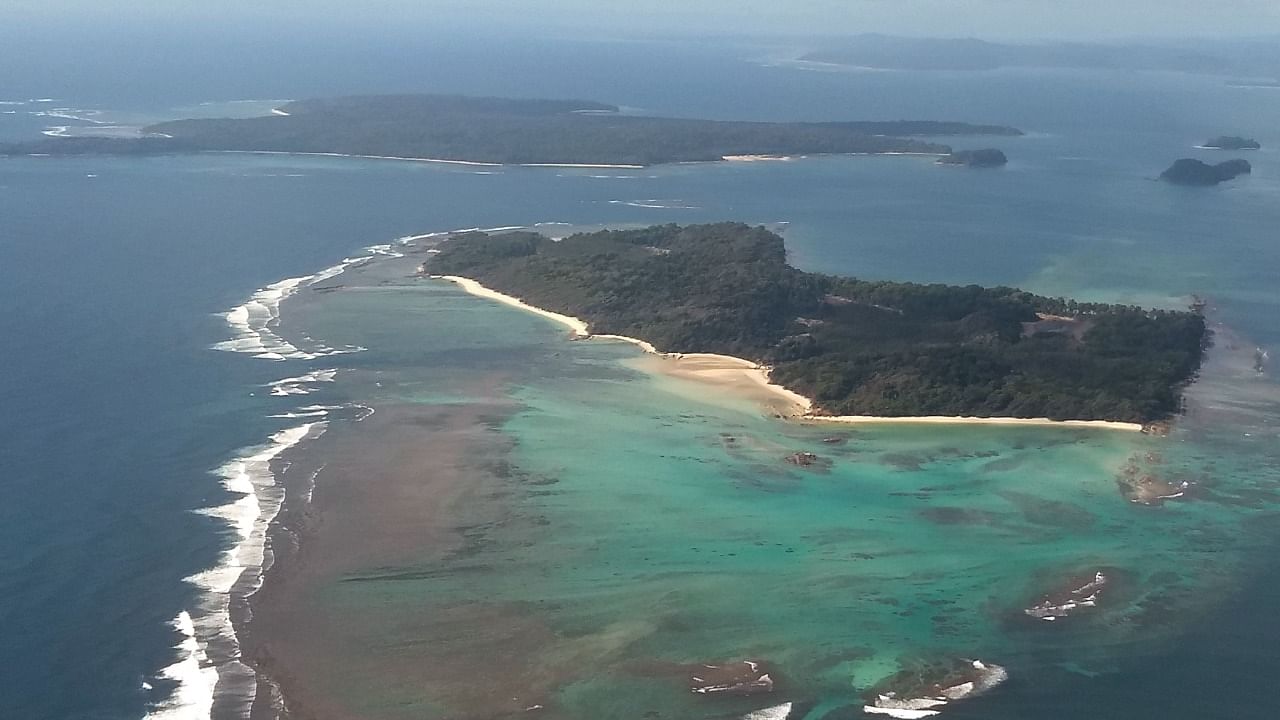
In the islands of Little Andaman and Great Nicobar, two new Greenfield Coastal Cities will be built. The cities will be developed as Free Trade Zones to compete with global cities like Hong Kong, Singapore, and Dubai,” says a vision document from NITI Aayog, or the National Institution for Transforming India, a government think tank.
“Zone 1 is the financial district and medi city along the eastern coast of the island, with the airport as the catalytic anchor. Zone 2 is the leisure zone located on the southern area of the island [and] would house tourism-attractive activities of entertainment and leisure such as casino strip, sports institutes, film city, water-based recreation etc, and Zone 3 is the nature zone located on the western coast of the island with an exclusive forest resort, nature healing district, and west bay nature retreat,” says the 58-page “Sustainable Development of Little Andaman Island Vision Document”.
The three zones put together need a land area of 239 sq km, about 35% of Little Andaman’s total land. Out of the 95% forest cover on the island, about 450 sq km is protected under the Onge Tribal Conserve and 640 sq km is reserved under the Indian Forest Act 1927. The document proposes de-reserving 32% of the forest cover.
However, there are certain factors, the vision document notes, that could prevent Little Andaman from becoming the new Singapore — factors that are “stopping us from developing these into veritable jewels for the country”.
These include lack of good connectivity with Indian mainland and global cities, a fragile biodiversity, natural ecosystems and certain Supreme Court notifications that pose an impediment to development. Another key factor is the “presence of indigenous tribes and concerns for their welfare”.
The vision document was described by conservationists as the first bullet through the heart of the island. Concerns expressed on the ‘developmental’ projects in Little Andaman Island are that they will have a direct impact on biodiversity and result in cascading effects on the indigenous Onge tribe.
“If required, tribals can be relocated to other parts of island” that are “conserved and protected”, states the vision document.
“We are very alarmed about this proposal and the appalling way it talks of stealing Onge land, and even relocating them, without any mention in the proposal that the Onge’s free, prior and informed consent must be obtained before their land is taken from them for this project,” said the London-based indigenous rights group Survival International.
A disastrous move
“This project of the government is totally going to be disastrous to the culture, society and the antiquity of the place. Because these are not tribes who settled down there 1,000 or 5,000 years ago – they have been living there for over 50,000 years. In fact, it is the civilisation of that old nature. This is a mindless act that India can do to dislocate them somewhere else,” said Anvita Abbi, professor and recipient of the 2015 Kenneth Hale Award and the Padma Shri, India’s fourth-highest civilian honour.
The number of Particularly Vulnerable Tribal Groups (PVTG) of Andaman and Nicobar Islands is just 769 as per the latest census of 2011. The Onge tribe, one of four major ‘Negrito’ tribes in the Andaman Island group, now number only 110 persons, having dwindled to that since 1900.
The Onge, along with other Andaman tribes, are believed to have been part of the early out-of-Africa migrations around 50,000 years ago and are barely managing to survive as a viable group after waves of settlements.
“Irrespective of the size of the island, what’s bothersome are the terms used for the proposed project — sustainable and holistic development. Anything that impacts nature irreversibly is not sustainable. Anything that impacts sustainability is not holistic. And when there is nothing holistic or sustainable, it cannot be called development,” says Coimbatore-based wildlife conservationist, Sanjay Molur.
Molur was awarded Sanctuary Asia’s prestigious ‘Wildlife Service Award 2020’ for his pioneering work in the field of wildlife conservation for over a quarter of a century.
It is particularly poignant to think: Will the PVTG, who lived through the 2004 tsunami, be able to survive the wave of the so-called sustainable development?
(The writer is an alumnus of IIM, Ahmedabad and a retired corporate professional)